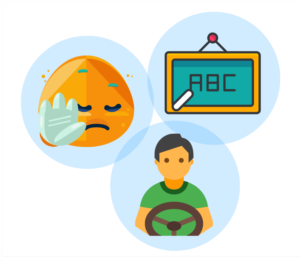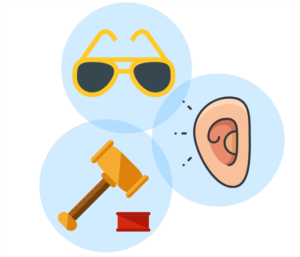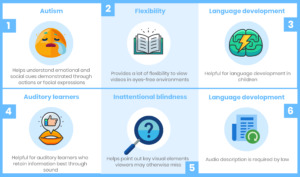Deep Dive: How Audio Description Benefits Everyone
Updated: August 23, 2024
Many products and features that we come across daily evolved from products and ideas meant to increase accessibility. Building ramps, which people often use to lug a heavy suitcases or push a stroller, were built with the intention of allowing individuals in wheelchairs easier access to buildings. Automatic doors are another example of a feature created to make buildings more accessible, yet have proven to be helpful for anyone carrying grocery bags, packages, etc.
It is not only physical products that have been designed for the disabled, only to later be mainstreamed and enjoyed by all – it happens with technology too. Predictive-text software and voice command both originated from the intention of making tech more accessible. A former Apple vice-president for advanced technology, Donald A. Norman, put it well when he said, “Most features that are accessible for the disabled have great value to everybody.” The same is true of audio description. Audio description, best known as an accommodation for blind and low vision users, has proven to have many additional and unintended benefits as well.

“Raise your hand if you’ve ever personally benefited from accessibility.”
Audio Description for Accessibility
Audio description is a descriptive track that narrates key visual elements in media. An accommodation for blind and low vision users, the number one benefit of audio description is accessibility. In 2015, the National Health Interview Survey found that 23.7 million Americans, which is about 10% of the population have trouble seeing, making this a critical accommodation for these viewers.
Audio Description for Everyone
Like many other products and features, the benefits of audio description turned out to be much greater than their original purpose. Below is a deep dive into some of the mainstream benefits of audio description, proving that everyone benefits from accessible content.
Individuals on the Autistic Spectrum
Individuals on the autistic spectrum find that audio description helps better understand emotional and social cues only demonstrated through actions or facial expressions. By narrating the key visual elements in media, audio description helps people on the autistic spectrum identify emotions which may be difficult for them to pinpoint. Having this audio track also provides another input, which reinforces the information so they can process it through both a visual and auditory channel.
Those Who Want to be Eyes-Free
Audio description also provides a lot of flexibility to view videos in eyes-free environments. It helps allows viewers to understand the visuals that are taking place on screen without being tied down in one place. A trend has developed where people are actually listening to movies with audio description turned on, and using them like an audio book to listen while driving, cooking, or doing other chores around the house. According to one Reddit user, their first thought when hearing audio description was, “Wow. This is the best produced audio book ever!” Others on the thread seem to agree.
Children Developing Language Skills
Listening is a key step in language development, and associating words with appropriate actions and behaviors. Audio description can be a useful pedagogical tool used to enhance language development in children by providing reinforcement and introducing new vocabulary. Audio description can also provide a dynamic experience for students to engage and become more involved in their own learning.
Auditory Learners
Research into how the brain processes information reveals that there are two channels, both an auditory and a visual channel. 20-30% of students say that they retain information best through sound, making audio description a helpful aid for these auditory learners.
Those Fooled by Inattentional Blindness
Another unique benefit of audio description is inattentional blindness. This is a phenomenon where you fail to recognize visual information in plain sight. (If you’ve never heard of this phenomenon, be sure to check out this video!) We often have instances where we miss a key visual element in a video or image until it is pointed out to us. This could be because we are focusing closely on something else, or are not fully focused. Audio description can help point out these key visuals to all viewers.
Law Abiding Content Creators & Publishers
Audio description is of course required by many federal laws in the US, including the Section 508 Refresh. Providing audio description can prevent litigation, and save you money and a headache down the road.
Looking to make your videos accessible and more enjoyable for everyone? Get started with audio description!










